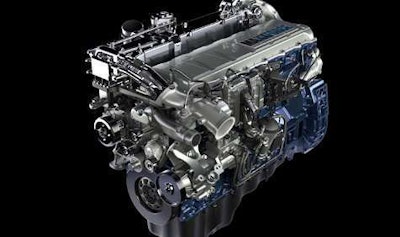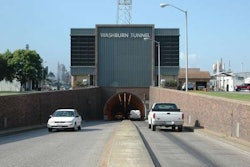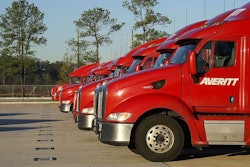
The U.S. Environmental Protection Agency is issuing a final rule that will allow Navistar to continue selling diesel engines that do not comply with 2010 diesel exhaust emissions regulations, assessing a fine of up to $3,775 per engine to do so.
Navistar president and chief operating officer Troy Clarke said the rule provides “clarity and certainty” for Navistar, its employees, union workers, dealers and customers. “We can now provide our dealers and customers with clarity and certainty as we transition to our clean engine technology and look forward to utilizing the final rule as needed,” Clarke said after the rule’s contents were announced.
The White House on Wednesday, Aug. 29, finished its work on the final rule that would determine whether Navistar would be allowed to continue to pay fines to sell diesel engines that did not meet the emissions standards. EPA on Aug. 7 filed its final rule for review with the Office of Management and Budget but did not disclose details at that time. Late Thursday, Aug. 30, EPA issued a release explaining the final rule.
“These penalties, which are assessed on a per-engine basis, allow a manufacturer to produce and sell nonconforming engines upon payment of penalties,” EPA said in its release. “The actual penalties reflect how close the engines are to meeting the standard – the cleaner the engines are, the lower the penalties will be.”
EPA said a 1985 rulemaking established the three basic criteria for determining the eligibility of emissions standards for noncompliance penalties in any given model year: The emissions standard must have become more difficult to meet; substantial work must have been required in order to meet the emissions standard; and a “technological laggard” must exist or be likely to develop.
EPA said its 1985 rulemaking defines a technological laggard as “a manufacturer who cannot meet a particular emissions standard due to technological difficulties and who, in the absence of NCPs, might be forced from the marketplace.”
An earlier interim rule had allowed Navistar to pay NCPs while continuing to sell exhaust gas recirculation-based engines that did not meet EPA emissions guidelines pending the final rule. The interim rule was challenged in federal court by Navistar competitors who claimed the NCPs did not constitute a realistic penalty for not meeting emissions regulations and therefore gave Navistar a competitive advantage over companies that had invested in – and delivered – selective catalytic reduction-based emissions solutions that met the emissions regulations. The court agreed with the plaintiffs, and the status of Navistar’s heavy-duty diesel engine lineup has been in limbo since, pending EPA’s final rule.
In explaining its final rule, EPA said that without NCPs, “a manufacturer that has difficulty meeting the standards has only two alternatives: fix the nonconforming engines, perhaps at a prohibitive cost, or not produce/sell them. The availability of NCPs provides noncomplying manufacturers with a third alternative, yet protects those manufacturers that have incurred the costs of complying with the standards.”
Navistar in early August announced that it would reestablish a relationship with Cummins and begin offering the new ISX15 15-liter diesel engine in certain models in January 2013 with the introduction of its ICT+ emissions solution in early 2013. Navistar said that during the transition to ICT+ that it would continue to build “compliant” MaxxForce diesel engines while it awaited EPA’s final rule.
Navistar said the addition of the Cummins 15-liter engine was one component of a multitiered plan designed to “enhance the company’s competitive position and growth and shareholder value.” These actions include:
• Adopting a U.S. market-proven aftertreatment solution to accelerate delivery of ICT+, Navistar’s next-generation clean engine solution;
• A market transition plan for Class 8 engine sales; and
• Securing a $1.0 billion loan commitment, which the company said will further enhance its liquidity.
Navistar on Aug. 27 announced that Daniel Ustian – the company’s president, chairman and CEO – was stepping down and that its board of directors had appointed Lewis Campbell – former chairman, president and CEO of Textron Inc. – as executive board chairman and interim CEO. Navistar also announced that it had promoted Clarke, previously president of Truck and Engine Operations, to president and COO.











